Salinas de Guaranda is a cold village.
It’s nestled in the Ecuadorian mountains at an altitude of 5,300 metres; a temperature which warrants the wearing of every warm layer to hand, topped with a waterproof jacket to combat the sudden downpour which rolls in every afternoon. Even when sitting under five layers of blankets in a hostel bedroom, a cloud of breath is still visible.
But the people of Salinas de Guaranda are anything but cold. This tiny pueblo of a thousand residents, although unassuming at first sight, is actually the location of something rather extraordinary. It’s home to a community formed almost entirely of co-operative businesses.
Josh had spotted Salinas in his Lonely Planet and immediately decided we had to visit. Their rural development is a perfect model of community-based tourism – and unlike the Disney-esque tourist villages so often touted as ‘authentic’ places to visit, Salinas is the real deal: a little mountain village as typically Ecuadorian as you can get.
But forty years ago, Salinas de Guaranda was poverty-stricken.
Like countless other tiny pueblos throughout South America in the early 20th century, the people of Salinas (so named because the sole means of labour here was salt extraction from a local mine) didn’t have access to medical care, schools or even to a road. The nearest town of Guaranda was a thousand metres lower in altitude but must have seemed like a world away.
But in the 1970s, an Italian missionary named Father Antonio Polo arrived in the region. He quickly established a fair trade co-operative in Salinas, whereby the locals could work together to produce local cheeses and then share out the profits equally. For a community that had previously only produced cheese and milk for self-sustenance, the concept of sharing the wealth made a lot of sense.
Over the following years, the pueblo took control of the co-operative concept, forming twenty four different industries. Today, the people of Salinas de Guaranda run over a hundred small businesses. They create a myriad of different products and distribute them around Ecuador: everything from cheese, chocolate and salami to footballs, sweaters and snails. Their ‘Salinerito’ cheese is particularly well renowned!
But the most surprising part? After spending a few days exploring Salinas de Guaranda, it doesn’t seem like the people of Salinas have any real idea of how fascinating their village truly is.
Arriving in Salinas de Guaranda
After spending half a day taking a bus from Riobamba to Guaranda, and then onwards to the village by way of a bumpy truck ride, we arrived in Salinas to see the small main square filled with preemptive celebrations for the annual Guaranda carnival. While music blared from the outdoor speakers, kids sprayed each other with canned foam and screamed excitedly, and as we crossed the square with our two large backpacks in search of our hostel, a man on stage shouted, “¡Bienvenido a Salinas, extranjeros!” in our direction.
I grinned happily. Anyone being so vocal with their greeting towards two foreign strangers was clearly happy to see us in their pueblo!
Equally welcoming was Luis, a local guy standing at the edge of the square in a distinctive red jacket with a dog at his side. Luis acted as one of the resident tour guides of Salinas de Guaranda, and offered to take us around the pueblo later that day and explain a bit more about the history of Salinas.
Our guided tour of Salinas de Guaranda
The first stop on our tour was the ‘El Salinerito’ cheese factory, where 90% of the population still work. As we walked up the road towards the factory, Luis explained to us how the Salinas co-operatives work.
Each co-operative has a coordinating council, the members of which are democratically elected. Of the twenty four different industries, cheese production is still the largest, which has allowed a certain amount of reinvestment in starting up many of the other coops, allowing them to reach fruition.
It’s a wonderfully simple method, but it relies on each of the cooperatives trusting in each other: something which is clearly more likely in a small community like Salinas.
Sadly the Salinerito cheese factory wasn’t full of workers that afternoon (too many Guaranda carnival celebrations had impeded its progress) but just as we arrived a sudden rainstorm opened up above us. It meant we were momentarily stuck in the cheese factory’s welcome area – and free to snack repeatedly on the various cheese samples…!
The young women working at the counter giggled shyly as they played YouTube videos on their computer, and watched as Josh and I started dancing to the music. Eventually Luis ran down the dirt track in a borrowed waterproof to fetch his truck, and we spent the next hour driving along muddied tracks around the village, peering through steamed up windows and jumping out to visit each new location on Luis’s tour.
Over the next few hours, we visited dozens of Salinas de Guaranda’s cooperatives; each one more interesting than the last.
At Artesalinas, the all-female knitting cooperative, a group of jovial Ecuadorians showed us tables piled high with alpaca jumpers. At the chocolate cooperative, a small factory named Confites El Salinerito, we drank hot chocolate, tried yoghurt made from soy beans, and tasted Swiss-inspired chocolate flavoured with the famous salt from the local mines.
At Dolomiti, the sausage making cooperative, we salivated over rows of dried sausages hanging from the ceiling rafters and eventually bought ourselves an entire salami, before moving onto the football-making factory (sadly closed, although we peeked in through the windows to see rows of tables with half-inflated balls), and paid a quick visit to the oil factory, where natural plant oils were produced.
Finally we toured the wool factory, where we watched factory workers sorting huge bales of wool before they were spun and dyed.
When our tour eventually finished the rain showed no signs of stopping, so we said goodbye to Luis and ducked quickly into an almuerzo restaurant on the main square for a late lunch. Anita Lopez, the owner and namesake of the restaurant, placed two glasses of juice on our table and immediately announced,
“Este jugo es con agua limpia, ¡no te preocupes!”
As we peeled off our layers of damp clothes to drink our ‘clean’ juice, steamy heat clouded out from huge pots filled with soup and boiling rice which dominated the stovetop. Time for lunch.
A quick adjustment to the slow life in Salinas de Guaranda
Over the next few days we developed something of a routine: a morning of walking above the pueblo, almuerzo lunches at Anita’s, time spent playing with our new friend Luis’s two dogs in the street and smiling at different familiar faces, all of whom wished us a ‘buen dia!‘ without provocation.
In the afternoons we snacked on salami and cheese while the regular 3pm downpour soaked the streets outside. Curled up amongst the children’s blankets on our bed, I leafed idly through the Salinas comic book I’d picked up from a local store.
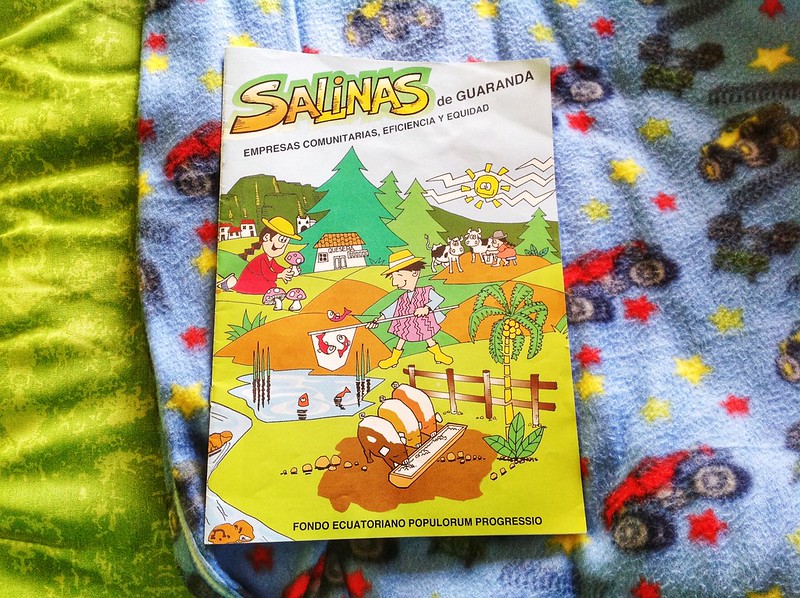
And in the evenings, we headed to ‘La V-Ka’, a pizza restaurant with only four tables and a poster for Ecuador’s first annual cheese festival hanging on the wall.
The owner and chef, a guy named Santiago Lopez, cooked pizzas for us with local Salinas cheeses and mushrooms, and when he ran out of pizza dough he left the kitchen and headed out into the rain for more. I’m pretty sure I’ve never visited a more trusting restaurant in my life!
By the time we left Salinas, our souvenirs included a bottle of chocolate soy yoghurt, three kinds of cheese, and various little bottles of ‘Pajaro Azul’ (Blue Bird), a local brandy liquor flavoured with herbs from Ecuador’s Andes.
We’d spent one evening being offered shots of ‘Pajaro Azul’ by the overly friendly owner of our hostel, who poured a generous amount into a small plastic cup from an animal’s horn he took off the wall. And on our final night, Luis drove us into Guaranda so we could drink yet more ‘Pajaro Azul’ in his favourite cafe.
Still wondering why Salinas de Guaranda is so special?
Forty years ago the people of this pueblo had nothing. Yet thanks to a change in the way they handle their economy, they’ve transformed into a fair-trade inspiration: shipping locally-made produce all over the world and welcoming curious tourists into their midst to see the process.
Moreover, the prevailing attitude in Salinas is wonderfully laid back. It’s a place where the appearance of two foreigners in a tiny and close-knit community warrants a cursory stare and a smiling nod of approval. Within hours of arriving, we were smiling and greeting the same faces as we walked around the entire pueblo (a walk which only takes twenty minutes).
Salinas is so laid back, in fact, that the road sign indicating an arrival doesn’t even mention the name of the village.
And yet, despite being an incredible example of the way that a cooperative society can work, nobody in Salinas shows you where to go or what to do.
The assumption seems to be that you’re probably already aware of what you’re doing if you’ve made it this far: to a chilly, misty pueblo buried in the Ecuadorian mountains, with a history soaked in salt but a future bright as anything.
Have you ever visited Salinas de Guaranda in Ecuador? What other community-based tourism have you found on your travels?
Transport: First we took a bus from Riobamba to Guaranda (the larger city nearby), which took approx 1.5 hours. Lots of different cities have bus transport to Guaranda town (from Guayaquil takes 4 hours, from Quito 4 hours etc). After that it’s a 30-45 min drive to Salinas de Guaranda. There’s actually a bus service run by a cooperative, but we opted for a $1 ride in a bumpy truck, sitting amongst the milk pails and stopping for farmers along the way!
Accommodation: There are three hostels in Salinas de Guaranda. We stayed at La Minga Hostel, a friendly little family-run place with a pizza oven downstairs and a balcony overlooking the main square. There’s no heating in the building so all the blankets on our bed were gratefully received!
Food: There are a few restaurants in Salinas de Guaranda, most of which serve pizza, and a couple of lunch spots.
Weather: Salinas is so high above sea level that in winter (December to May) it rains a lot, and in summer (June to November) it’s very windy. We visited in March and there was a daily rainstorm each afternoon.
Altitude: Although Salinas is a small, easily walkable place, the area’s high altitude could make you sick. If you’ve been susceptible in other parts of the continent (and you’ve already been to Bolivia!) bring some coca leaves to chew on.
Money: There are no cash machines in the village, so make sure you bring enough cash with you!
Suggested length of stay: Many visitors just stay one night in Salinas but we decided on three. It meant we really got to know the village – but I think three days is the maximum to spend here.

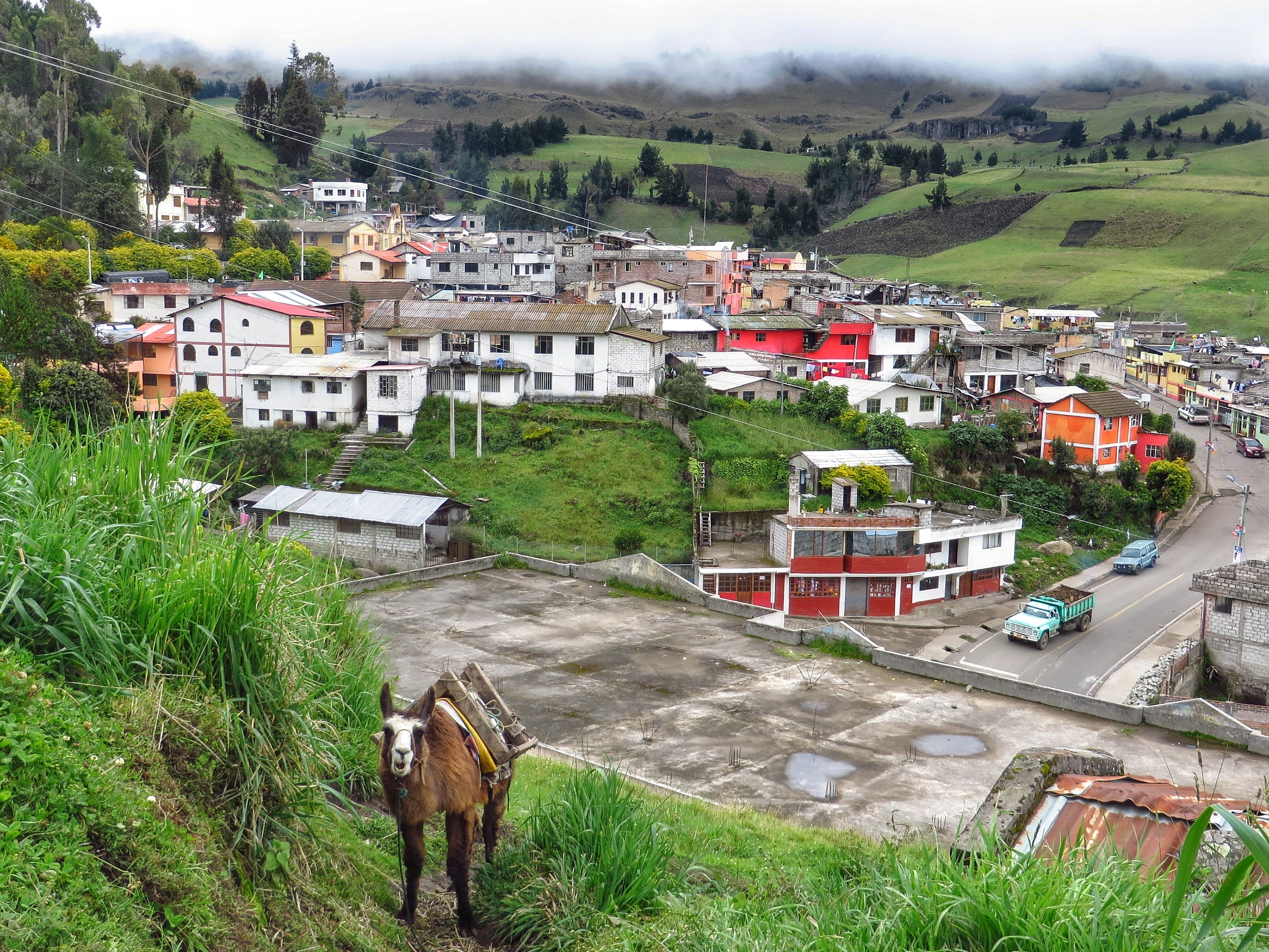
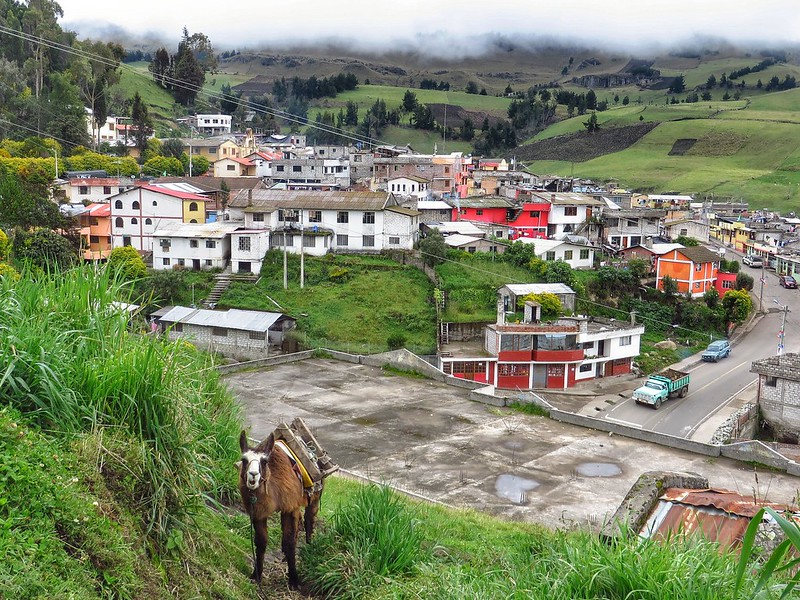
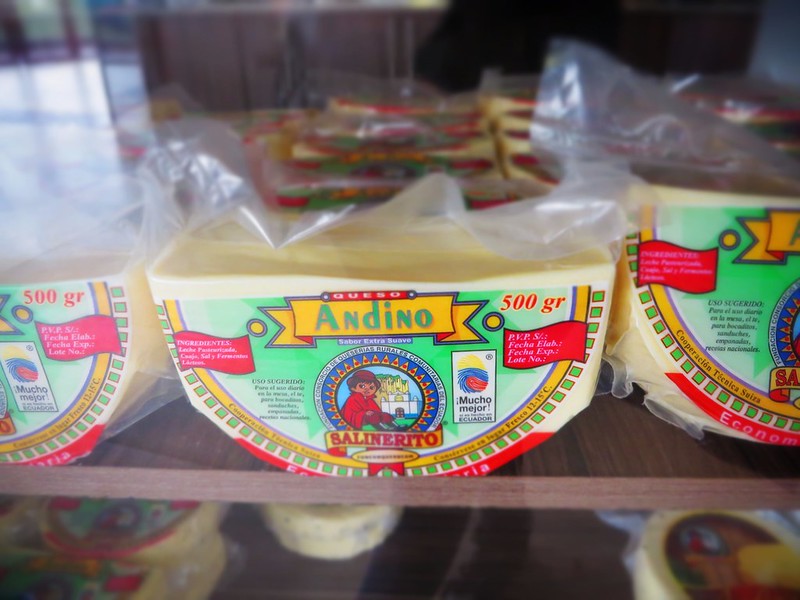
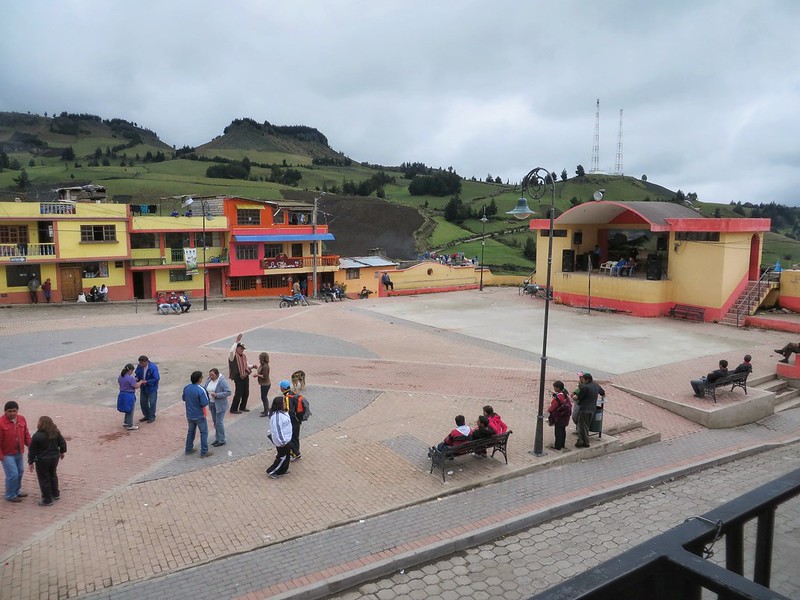
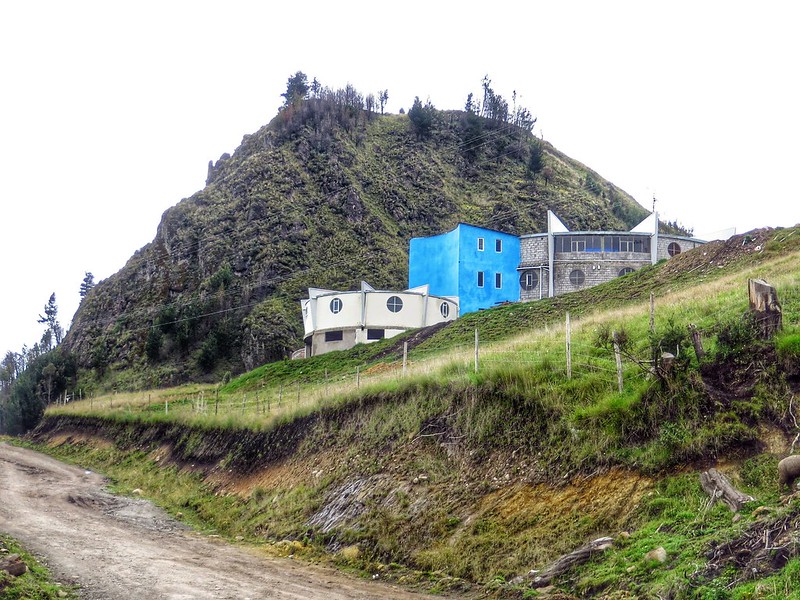
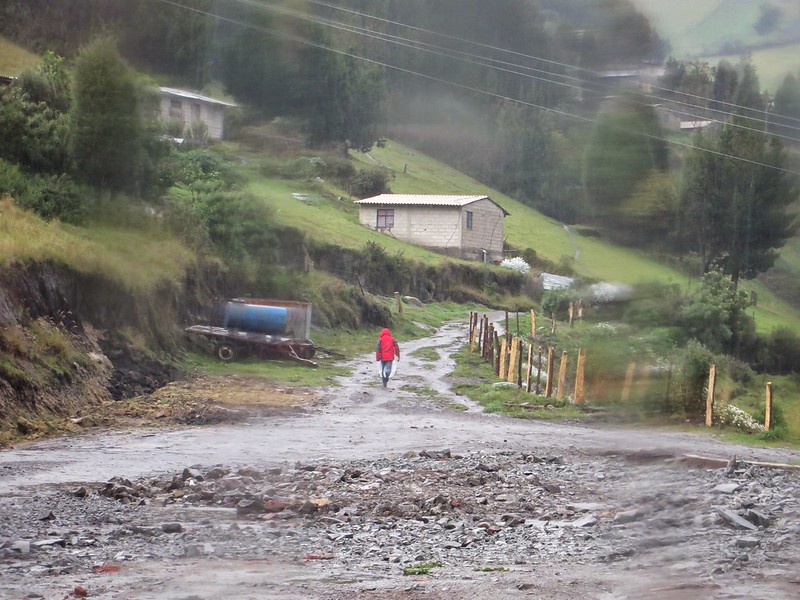


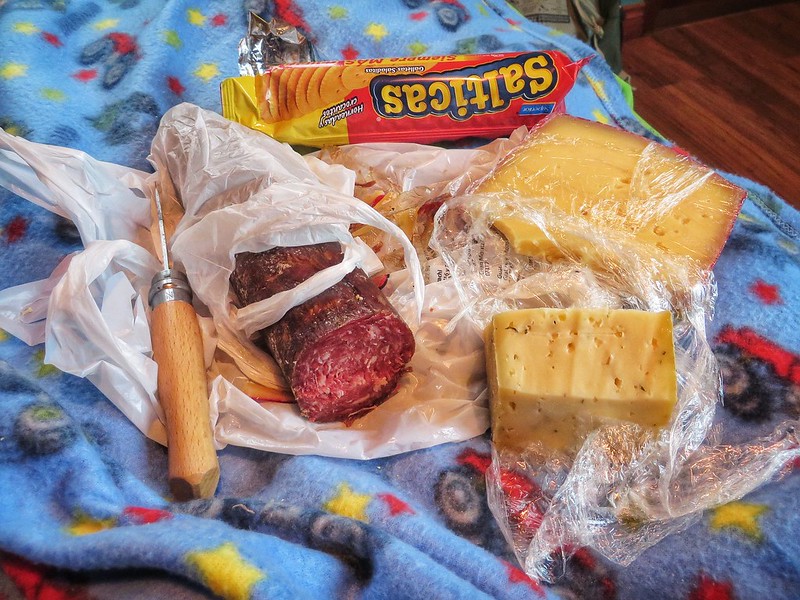
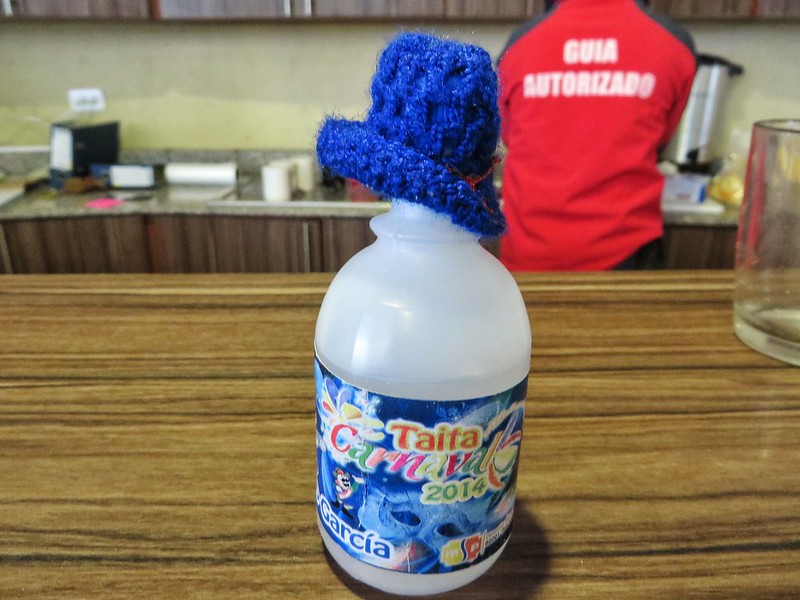
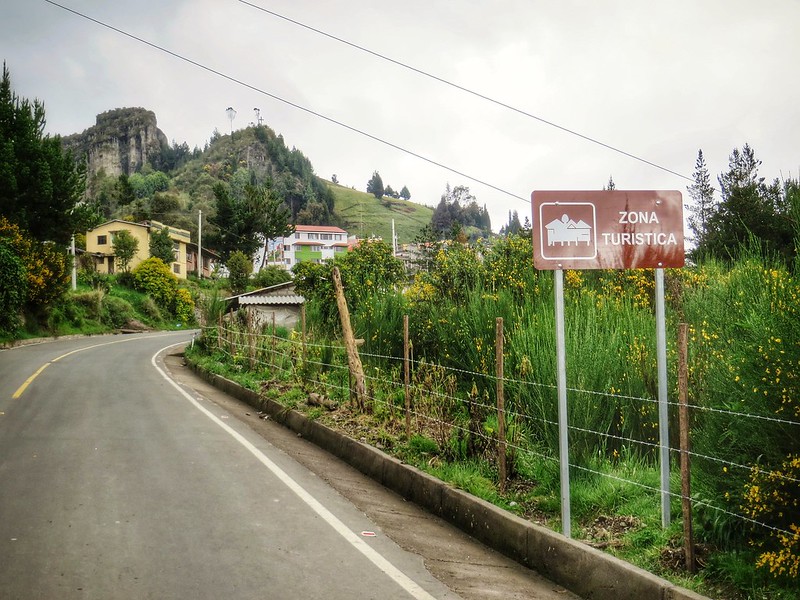
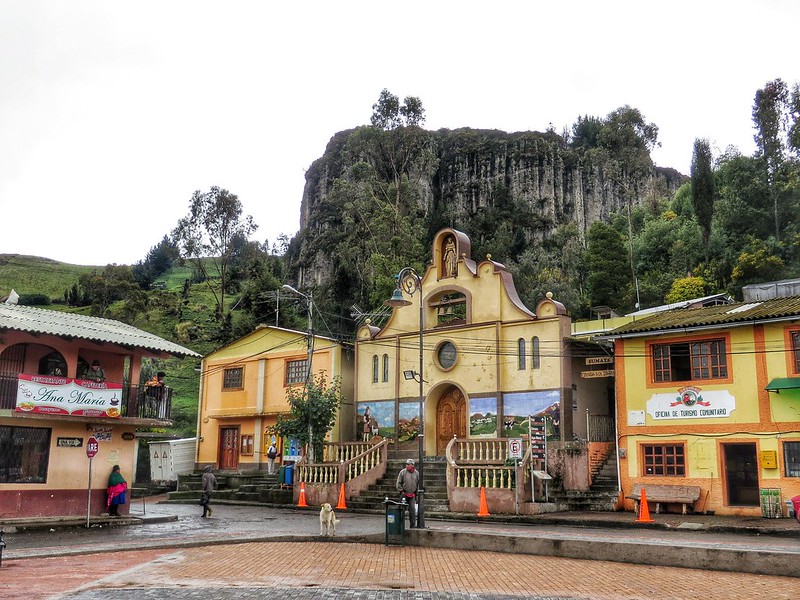
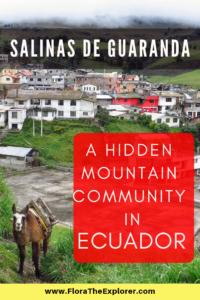

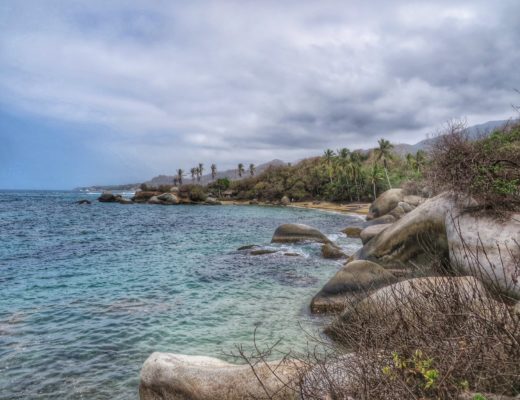
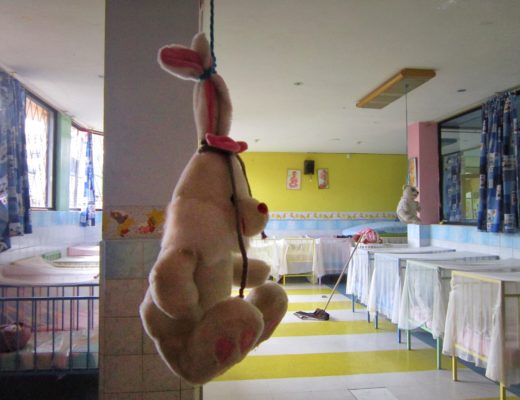
23 Comments
Spencer
March 13, 2014 at 4:16 pmWhat a rich experience!!
Flora
January 14, 2019 at 3:40 pmThanks Spencer!
Lauren
March 14, 2014 at 3:21 amWhat a fascinating place! Goes to show you how a place can be completely transformed and self-sufficient with a little bit of assistance! Sounds like a very enriching experience!
Flora
March 20, 2014 at 1:04 amIt was so fascinatingly different to pretty much every other place I’ve been in South America. A total eye opener!
Salinas de Guaranda: a Community of Co-operatives… | Medical Tourism Network - Mundo Medical
March 30, 2014 at 1:13 am[…] de Guaranda: a Community of Co-operatives floratheexplorer.com/cooperative-co… via […]
domain
August 28, 2014 at 12:03 amMy brother suggested I might like this web site. He was entirely right.
This post actually made my day. You cann’t imagine simply how much time I had spent for this
info! Thanks!
Maya
January 12, 2019 at 5:45 amI love these kind of stories! Never heard about this place before but it is so inspiring to see what an influence Father Antonio has had on their lives. Such and inspiration! Would love to go myself to check yarn factory. Adding this place to my list!
Flora
January 14, 2019 at 3:12 pmHe’s such an inspiring figure! So glad you’re adding Salinas to your Ecuador travel list, Maya
mohanaandaninda
January 12, 2019 at 11:24 amWhat a fascinating little place! I’m amazed how the locals are still running the cheese factory as a co-operative and not only that they have successfully set up other businesses as well.
Flora
January 14, 2019 at 3:35 pmIt’s a really wonderful village And the sheer number of co-operatives they’ve established is so inspiring.
And the sheer number of co-operatives they’ve established is so inspiring.
Gibbers
January 12, 2019 at 2:24 pmWhat a unique experience you had. And amazing to read how they are expanding their locally-produced/made products worldwide!
Flora
January 14, 2019 at 3:37 pmIt was so cool to learn that they export their Salinerito products all over the world! It’d be amazing to see their brand being sold somewhere other than Ecuador
Angelica
January 12, 2019 at 3:31 pmI have not had the chance to check out Salinas, but now I feel like a missed out on an amazing experience in Ecuador! I love that they were able to go from poverty stricken to different community based, locally owned businesses. A lot of times you see villages that turn to one giant corporation giving them low paying, not fulfilling jobs, and it doesn’t aleays end well. Thank you for sharing.
Flora
January 14, 2019 at 3:49 pmThat’s exactly what I was concerned about before we arrived, Angelica! But luckily it seems like the community in Salinas are pretty set on remaining in control of their co-ops and handling everything amongst themselves as opposed to allowing a conglomerate to take over. Which is all the more inspiring really!
Julie
January 12, 2019 at 5:54 pmSpent a month in Ecuador in 2017 and absolutely loved it. I never heard anything about this village though and when I make it back to Ecuador I really want to visit:)
Flora
January 14, 2019 at 3:39 pmI didn’t hear much about Salinas de Guaranda while I was in Ecuador either, Julie! But sometimes investigating the tiny write-ups in Lonely Planet are really worth checking out
The Click Fit
January 16, 2019 at 10:23 amWhat a rich experience!!
Flora
May 7, 2019 at 10:59 amThanks!
Courtney
April 26, 2019 at 4:16 pmThis is a very late comment, but I loved reading about your experience! In the summer of 2018, I volunteered with WorldTeach and lived in Riobamba for the summer with 3 Ecuadorian priests. They took me to Salinas and we spent a day touring and shopping and trying everything! Plus a pizza lunch of course. We also got to visit the local church there, and the priests took us on a short hike behind their chapel. It was a foggy day but it was such a beautiful place, bumpy road and all. I’ve been missing it like crazy and have just come across your blog. You encapsulate every moment so well. Thank you for writing!
Flora
May 7, 2019 at 1:28 pmThanks so much Courtney! It sounds like you had such a unique experience in Salinas – I’d have LOVED to meet the local priests!
www.Lanavetta.com
May 19, 2019 at 12:03 pmche belle foto!
Flora
May 21, 2019 at 10:59 amMolto grazie!
Mark lewis
December 7, 2020 at 2:23 pmI too took the advice of lonely planet after reading their piece, suggestion concerning Salinas de Guaranda. I was there for a couple of days, traveling solo and I was completely enchanted by this tiny little
Town. I played reggae and punk rock with Antonio(?) at the “main” pizza restaurant
there, after binding with the Black Sabbath he was playing through the p.a. we switched off on playing instruments when a local came in who I was introduced t0, an organic, farmer, completely off the grid whose farm was perched up on the hill, mountain really, nearby. Also the festival de los Reyes was in full swing the WHOLE TIME I was there.
Salinas de Guaranda was an amazing town, amazing experience.
Thank you so much Flora for sharing your insights and experiences here.